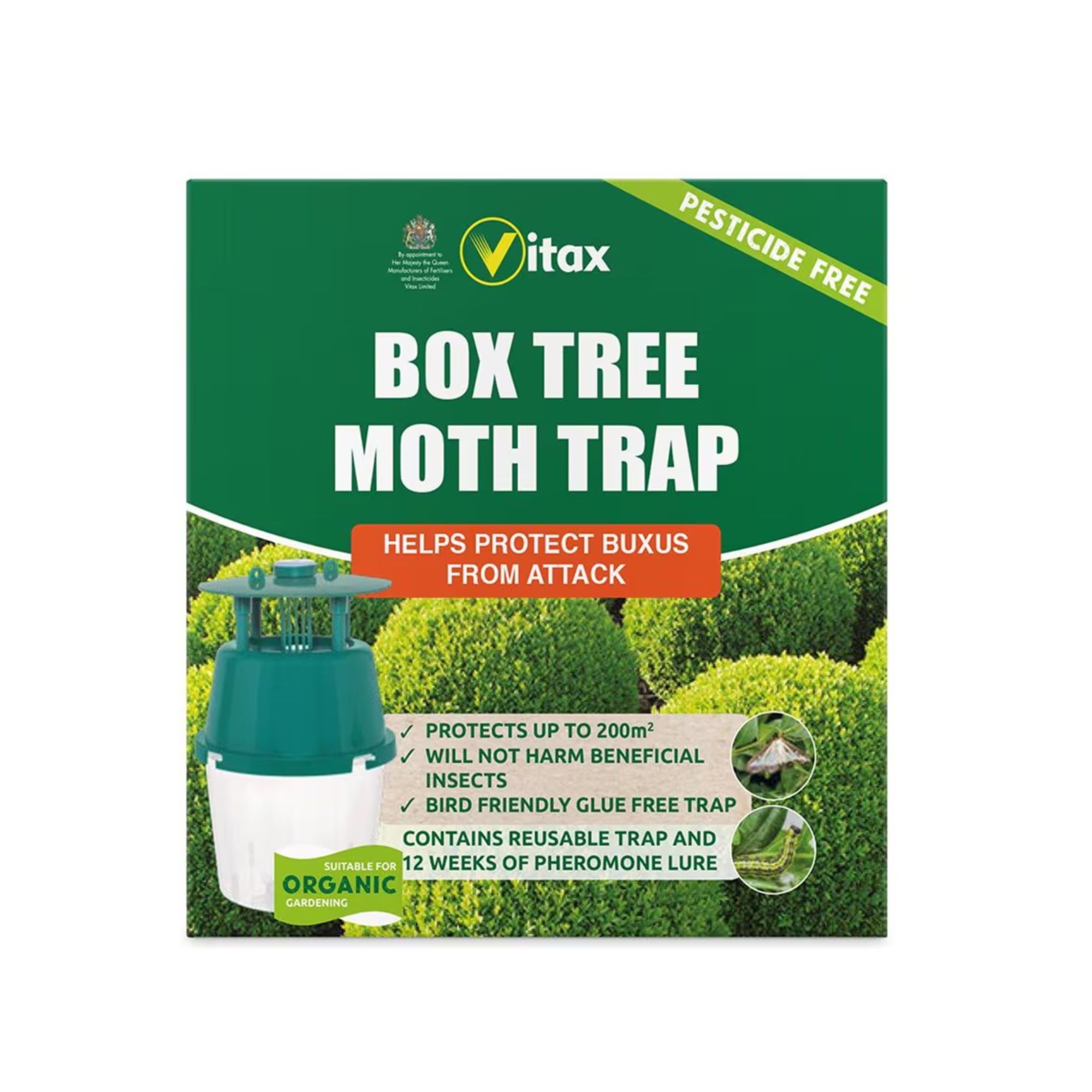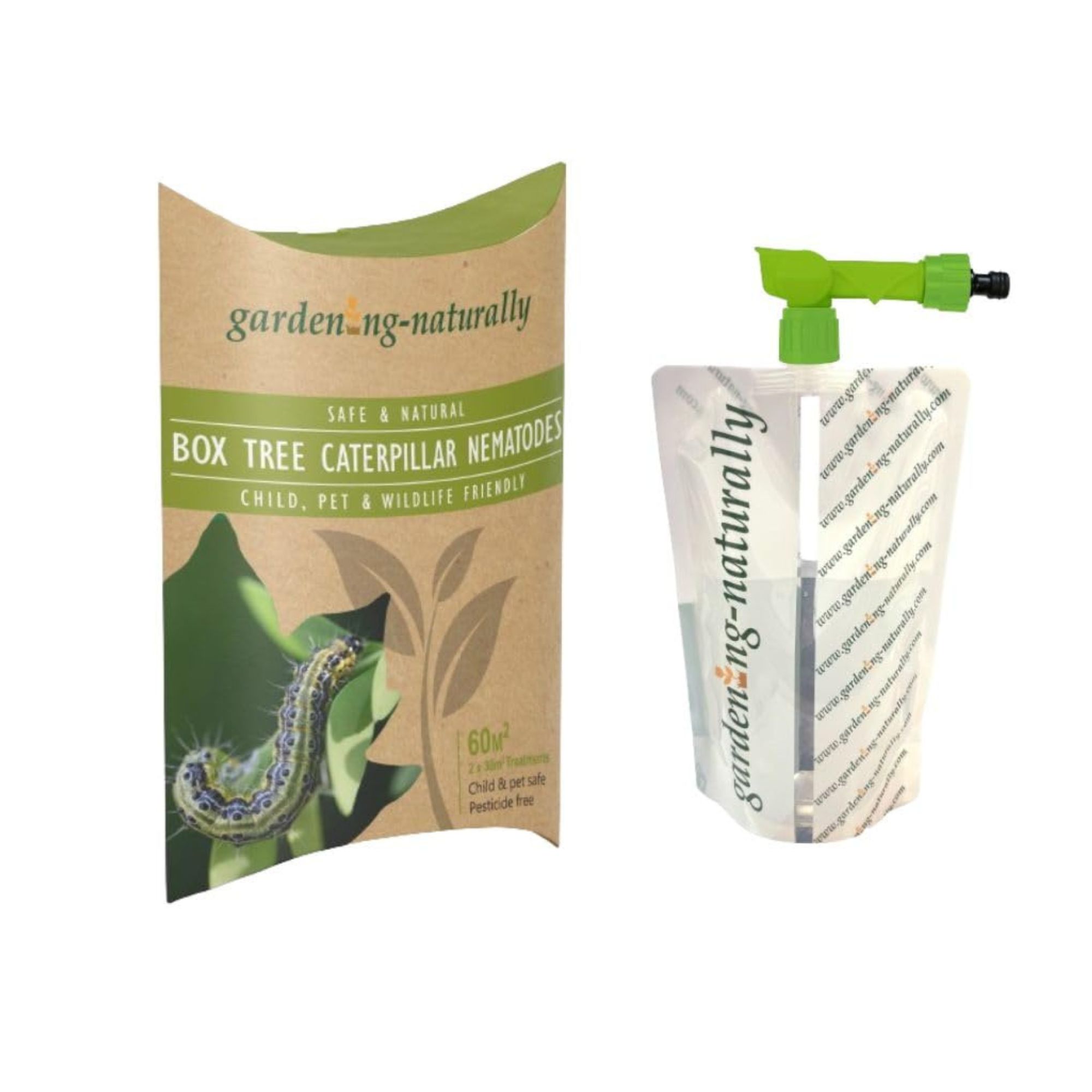Box tree caterpillars are quietly destroying Britain’s gardens, but this is how you can get rid of them for good
For starters, what are box tree caterpillars?!

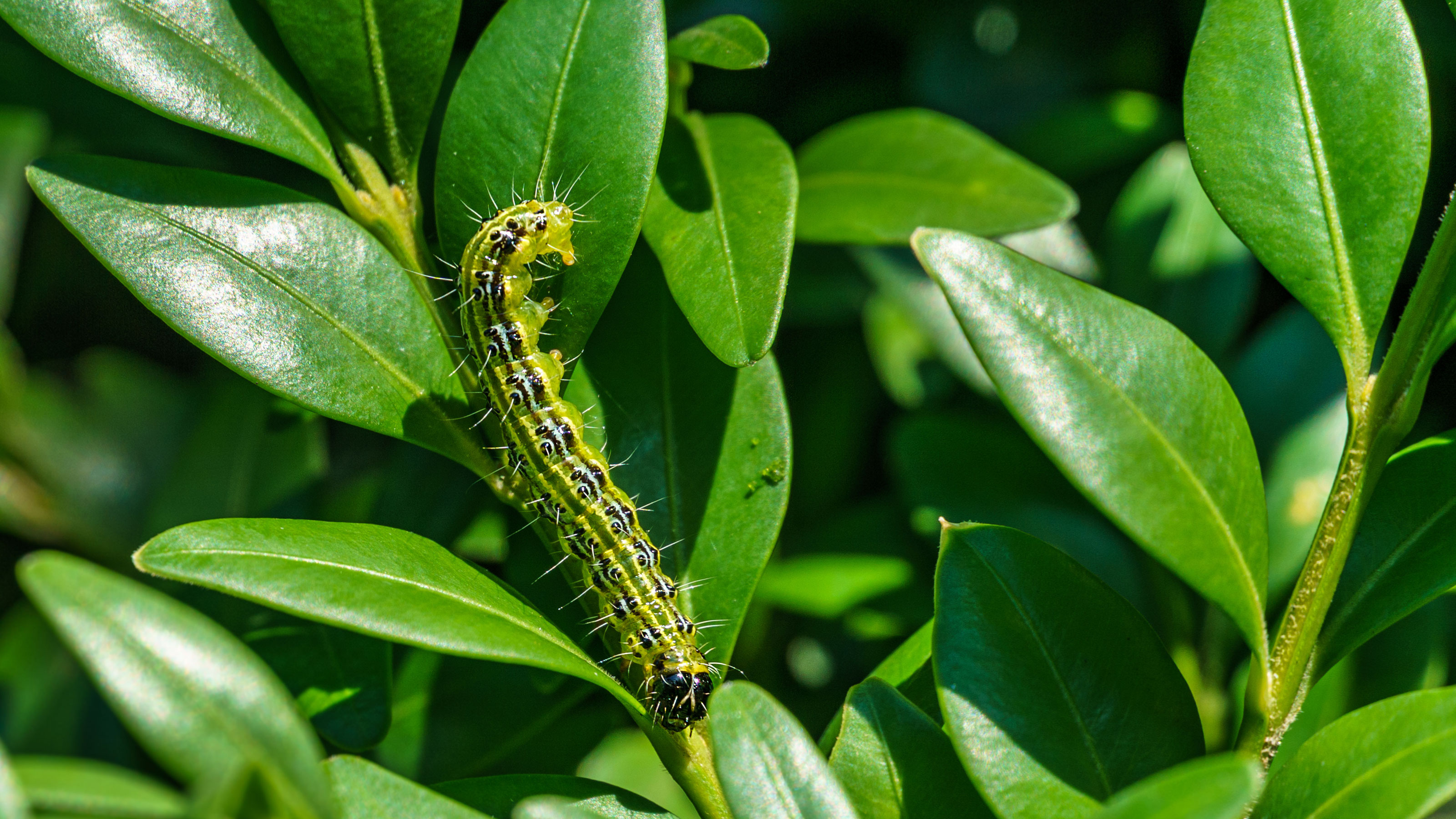
We love animals as much as the next person, but it seems as though we’re dealing with another potentially dangerous garden pest every single day. Right now, homes across the UK are struggling with box tree caterpillars… but what are box tree caterpillars, and how do you get rid of them?
We’re all protective of our garden ideas, and that’s why we do everything we can to get rid of slugs and protect our homegrown fruits and vegetables from glasshouse whiteflies. But box tree caterpillars are very specific in their requirements, and they only want one thing: to overpower your box plants.
So, whether you have a box hedge or an ornamental box tree in your garden, we’ve got all of the information you could possibly need about these box-loving pests, how they can pose a serious threat to your garden, and what you can do to get rid of them.
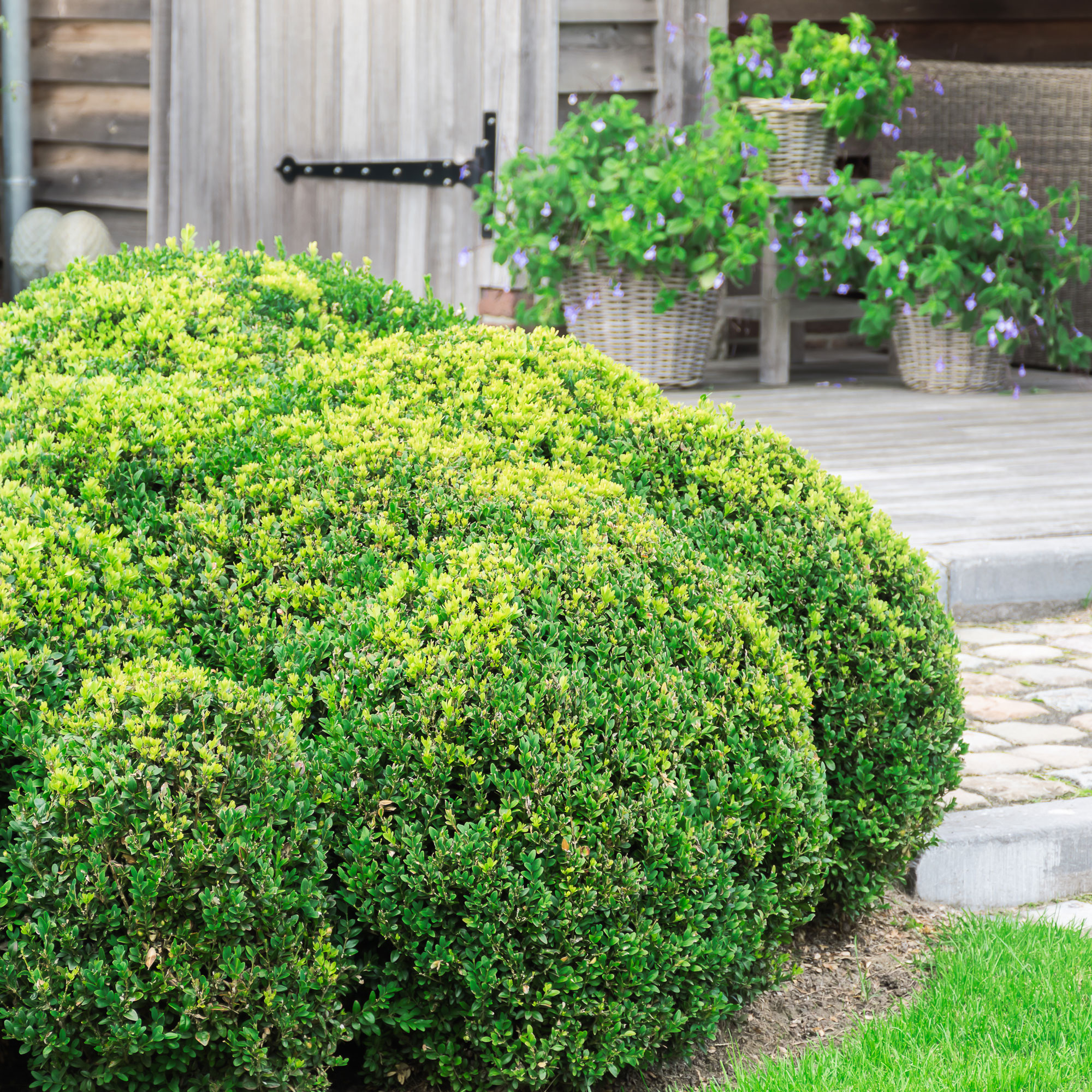
What are box tree caterpillars?
Unlike the toxic caterpillars that terrorise UK gardens, box tree caterpillars aren’t harmful to humans or pets. However, they can feed on your box plants and can turn what was once a beautiful hedge or topiary tree into something you can’t stand to look at.
But what are box tree caterpillars? Well, as Daniel Steward, Managing Director at Shield Pest Control, explains, ‘Box tree caterpillars are the larvae of the box tree moth (Cydalima perspectalis), an invasive species that poses a significant threat to boxwood (Buxus) plants. Native to East Asia, the adults lay eggs on the undersides of boxwood leaves, and the larvae hatch to feed on the plant, often causing severe defoliation.’
Yes, although they’re native to East Asia, box tree caterpillars have been terrorising private gardens in the UK since 2011 - and their numbers are increasing at a rapid rate.
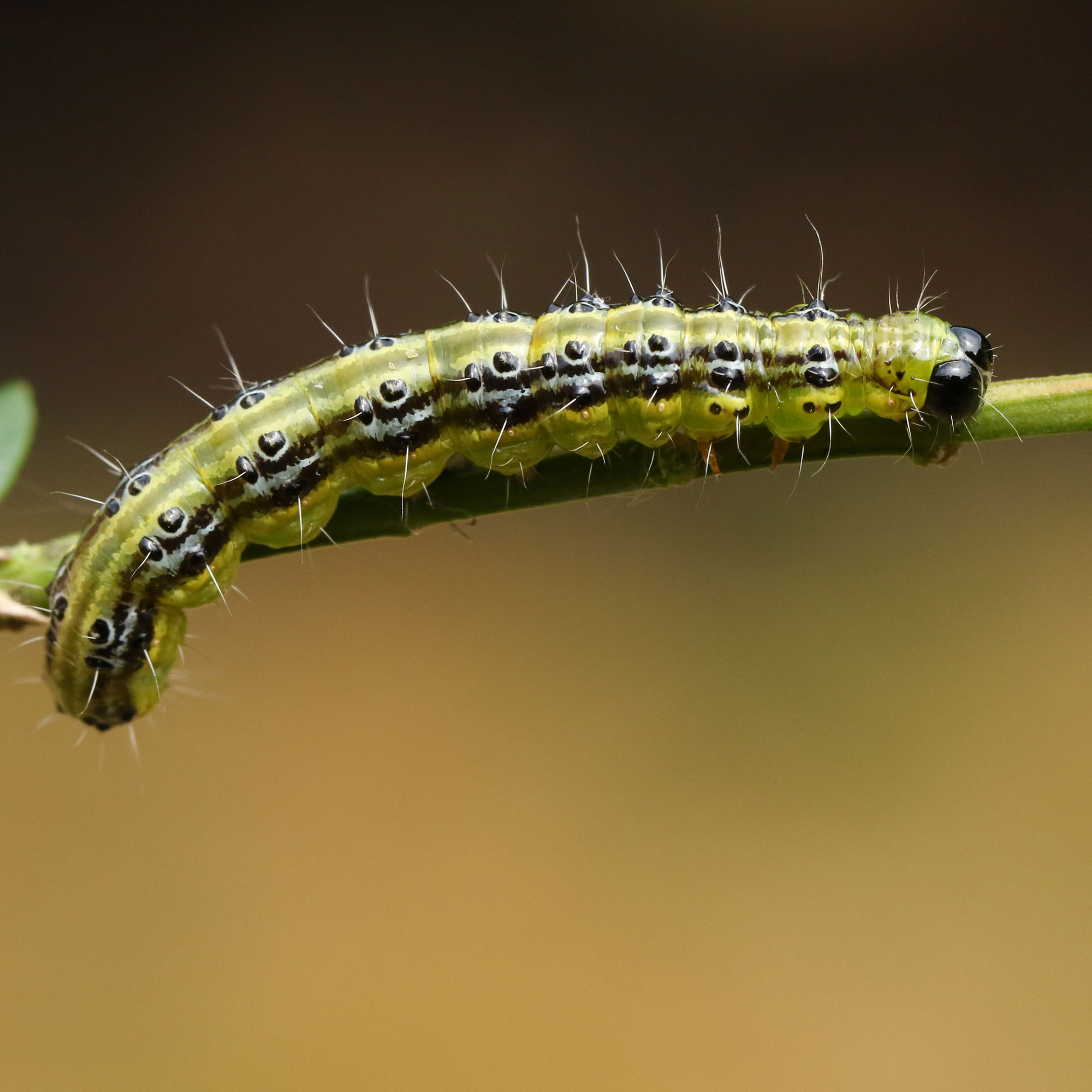
For the most part, box tree caterpillars are an all-year-round nuisance, but they’re particularly active during the main feeding season, which occurs between March and October. This can leave house-proud gardeners tearing their hair out as they watch their beloved box plants take a hit.
Sign up to our newsletter for style inspiration, real homes, project and garden advice and shopping know-how
So, what do box tree caterpillars look like? Pim Dickson, horticulture expert at Mr Fothergill's, says, ‘The small caterpillars can be recognised by their green and yellow marking and black head. They go on to develop black and white stripes on their bodies as they mature.’
Depending on their age, they’ll grow to around 1-4cm long. However, they can often be hard to spot as they’ll cocoon themselves in white webbing (very similar to spiderwebs) within the box plant’s leaves to eventually become a box tree moth.
Signs of box tree caterpillars
If you’re wondering whether you have box tree caterpillars, there are some visible signs you can look out for. And if you notice any of these signs, read on to the next section to learn how to get rid of box tree caterpillars:
- Visible caterpillars or moths, particularly towards the back of the plant.
- White webbing spun between leaves, sticking them together (and there may be pupae inside).
- Stripped bark on the plant or tree.
- Pale, thin leaves that seem to have died back.
- Yellow eggs stuck to the underside of leaves.
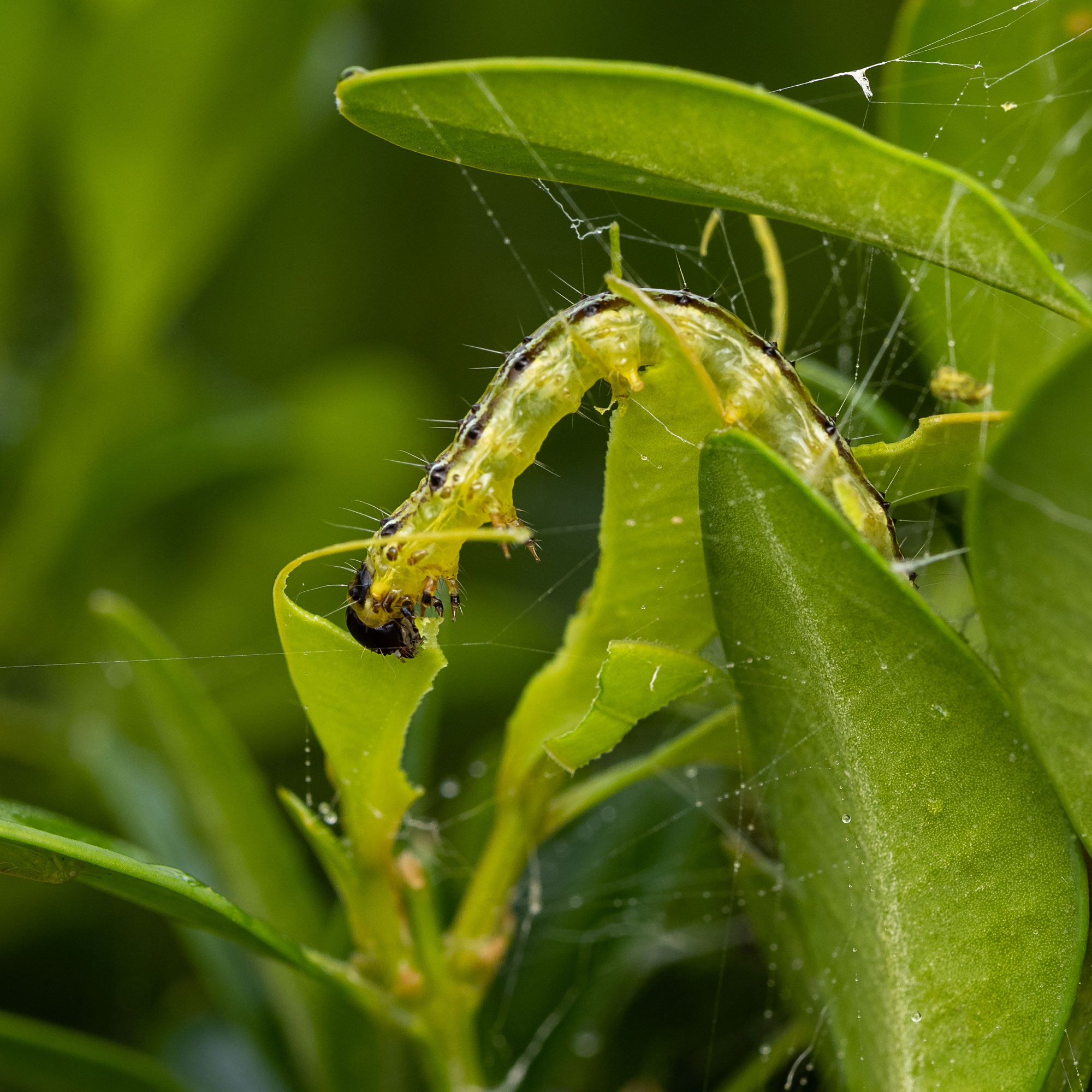
How to get rid of box tree caterpillars
What you'll need
1. Get rid of them by hand
If you’re a little squeamish, you might want to find a willing helper for this particular job. But getting rid of box tree caterpillars by hand can be extremely effective if you have a relatively small number hanging out in your garden.
John Clifford, garden expert at Gardenstone, explains, ‘If the infestation is small or you only have a few box plants in your garden, you can attempt to remove them by hand.'
'However, this will need to be done every day after you have noticed the signs of their presence, and ensure that you are checking deep into the foliage of plants. It may be beneficial to prune out any plant stems that are covered in webbing, too.’
However, if you have a larger number and your box hedge is inundated with little critters, it’s probably best to try another option.
2. Use a pheromone trap
Although it’s unlikely to get rid of all of the box tree caterpillars in your garden, pheromone traps can definitely limit the breeding of these critters.
John says, ‘They work by luring male moths into the traps to prevent them from mating with the females, allegedly reducing the amount of eggs that you will see on your box plants.’
‘However, they need to be replaced regularly to have any sort of impact, and they are unlikely to be capable of catching every single male moth in your garden, but they can help to indicate the scale or presence of a box caterpillar infestation.’
3. Encourage more wildlife
It may seem counter-productive, but adding more wildlife to your garden can help to get rid of box tree caterpillars. That’s because these animals will try to steer clear of natural predators and will ultimately avoid potentially dangerous gardens.
Box tree caterpillars dislike birds the most, so adding bird boxes to your wildlife garden is a cheap and effective way to add a natural touch to your outside space while also getting rid of the caterpillars in the process.
As if that wasn’t enough, box tree caterpillars also hate wasps, ants, and spiders, so why don’t you build yourself a bug hotel, too?
4. Use box tree nematodes
If you’re struggling to get rid of box tree caterpillars and you’ve tried all of the above to no avail, using a biological treatment may be the only option. While experts in other countries swear by Topbuxus XenTari, available on Amazon, a biological insecticide, it’s not yet been approved for domestic use in the UK.
However, an effective alternative is to use box tree nematodes. Pim explains, ‘These microscopic worms (Nematode Steinernema) are natural predators which seek out and feed specifically on box tree moth, to stop them feeding on your box (Buxus) plants.’
‘Nematodes are naturally found in the soil, and by using a box tree caterpillar control nematode product, you are simply concentrating their numbers precisely where they are required most.’
‘The nematodes are usually applied from March to October, but for best results, I would recommend using it when soil temperatures are reliably above 10°C and to avoid mid-summer when the weather is hot and dry, as they are most effective in a more humid atmosphere.’
And you don’t have to worry about this concoction harming the wildlife in your garden, either, as it’s safe for humans, birds, and bees - including the ones who then eat the treated caterpillars.
There are similar options on the market, too, so just make sure you do your research before choosing the right option for you and your garden.
FAQs
Do box trees recover from caterpillars?
Spotting the tell-tale signs of box tree caterpillars in your box plant can be disheartening and can have a disastrous effect on the plant itself. And while it’s going to look a little worse for wear, the good news is that box trees can recover from caterpillars - as long as you treat the problem and get rid of them before too much damage is done.
It won’t happen overnight, but you can normally expect to see new growth around two months after the infestation has been dealt with. Just make sure to keep an eye out for anymore critters, as the caterpillars can come back just as quickly as you got rid of them.
What do box tree caterpillars turn into?
As box tree caterpillars are the larvae of the box tree moth, box tree caterpillars will eventually become box tree moths. Both the caterpillars and the moths can eat your box plant, which is why it’s always a good idea to deal with your infestation as soon as possible.
So, have you spotted any box tree caterpillars in your garden?

Lauren Bradbury has been the Content Editor for the House Manual section since January 2025 but worked with the team as a freelancer for a year and a half before that. She graduated with a Bachelor’s degree in English and Creative Writing from the University of Chichester in 2016. Then, she dipped her toe into the world of content writing, primarily focusing on home content. After years of agency work, she decided to take the plunge and become a full-time freelancer for online publications, including Real Homes and Ideal Home, before taking on this permanent role. Now, she spends her days searching for the best decluttering and cleaning hacks and creating handy how-to guides for homeowners and renters alike, as well as testing vacuums as part of her role as the Ideal Home Certified Expert in Training on Vacuums, having spent over 110 hours testing different vacuum models to date!
